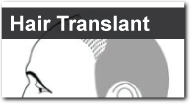A new review of existing research offers little comfort to those losing their hair.
Patients who are afflicted by the condition known as alopecia areata – a patchy form of hair loss – should understand that there is no reliable, safe, or effective long-term treatment.
Alopecia areata accounts for an estimated one in every 50 dermatologist visits in the U.S. 1.7 percent of people will be afflicted by it at some point during their lives. Most affected people develop bald spots before the age of 20. The condition may improve with age, but hair loss episodes often occur.
Alopecia areata is caused when the immune system attacks the hair follicle. Some cases are linked to physical or emotional stress, but others do not have an apparent trigger.
Dr. Mike Sladden, a dermatologist at the University of Tasmania in Australia, examined 17 randomized controlled trials of treatments for alopecia areata. The studies looked at 540 patients, and measured the effectiveness of several treatments, including topical and oral corticosteroids and topical cyclosporine (these drugs dampen the immune system to try to stop it from attacking hair follicles). Other treatments examined included photodynamic therapy (which exposes the skin to light) and topical minoxidil.
According to the review, none of the studies showed long-term “beneficial hair growth” defined as the return of more than half of the missing hair. Although one small, unpublished study, found that hair regrew in almost half of 60 subjects with mild alopecia areata who applied onion juice to their heads. Onion juice, an alternative medicine, has been used to treat infections.
Many available treatments do work very well in some cases, but there is no way to predict who will respond to treatment or how long the response will hold.


 "Hair Science received high marks from the team at Bosley.
"Hair Science received high marks from the team at Bosley.


